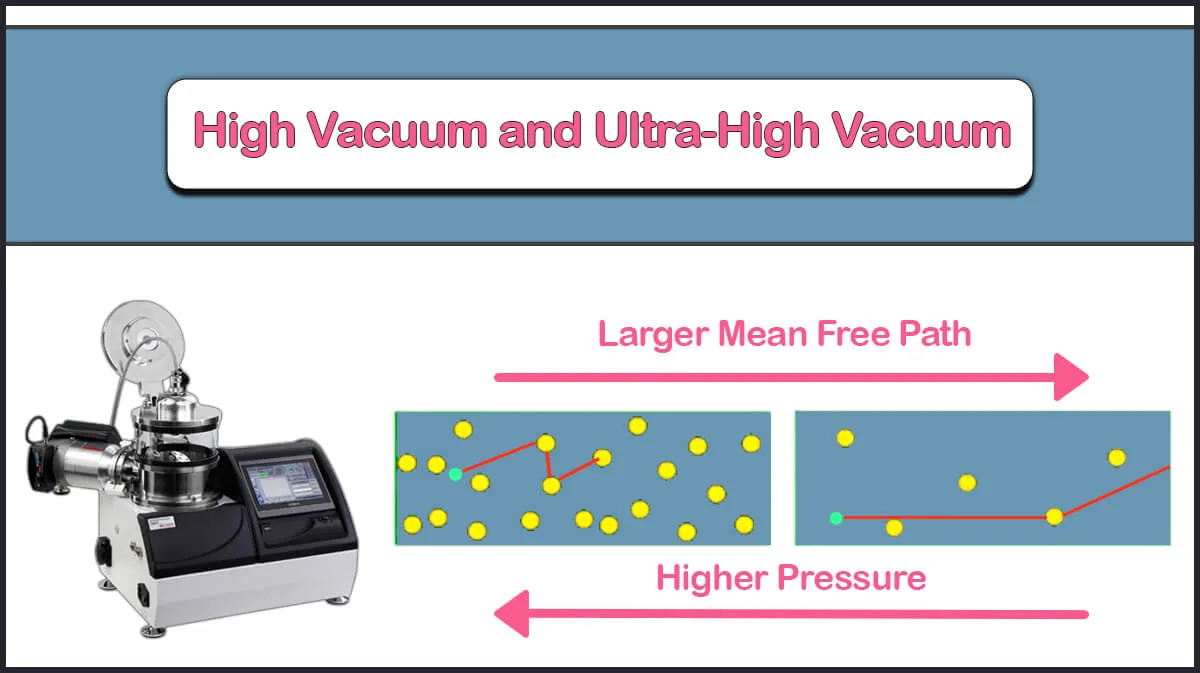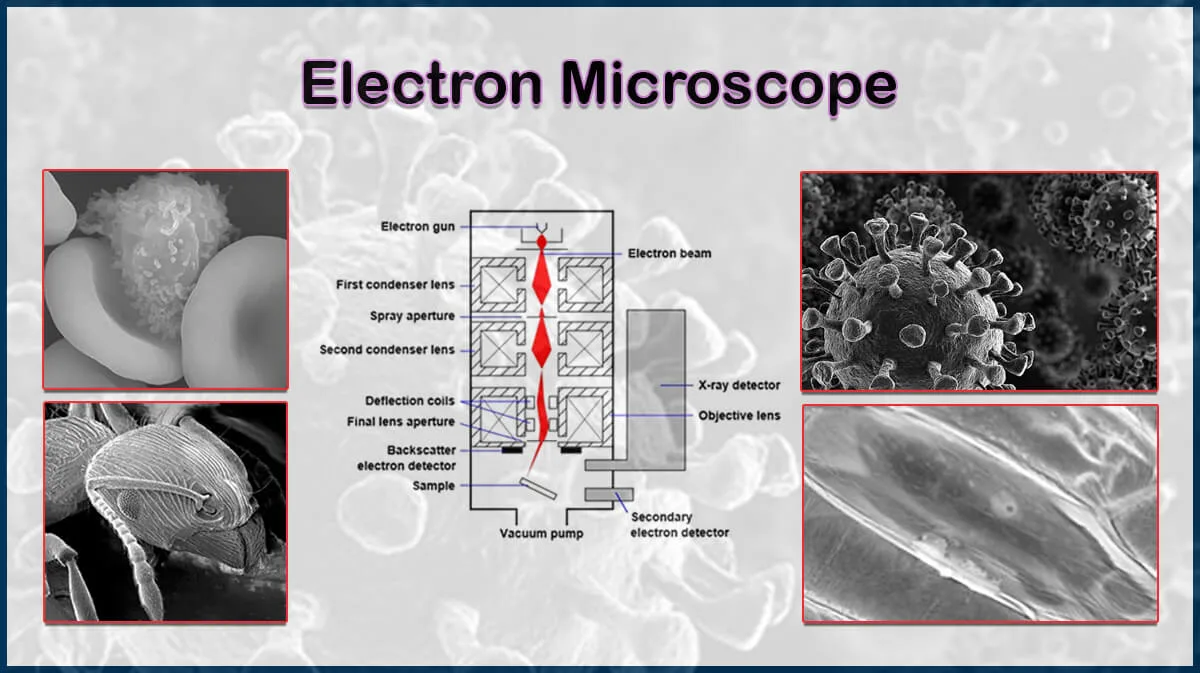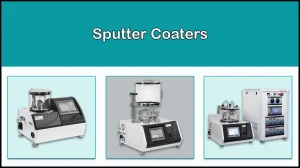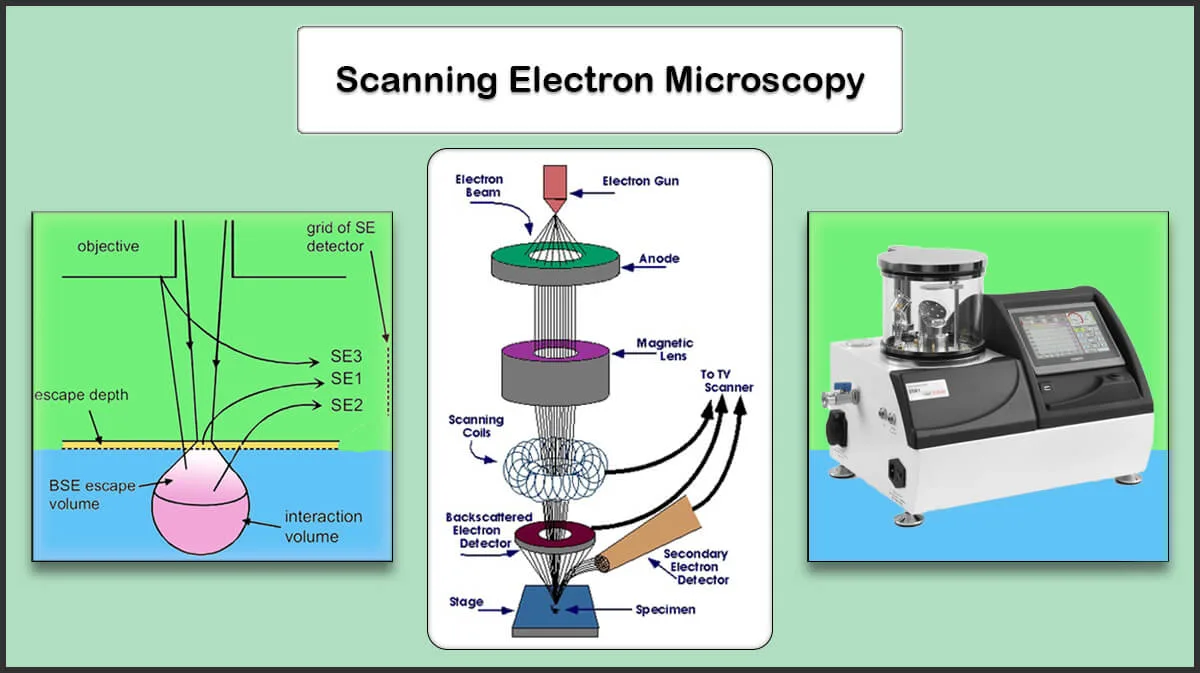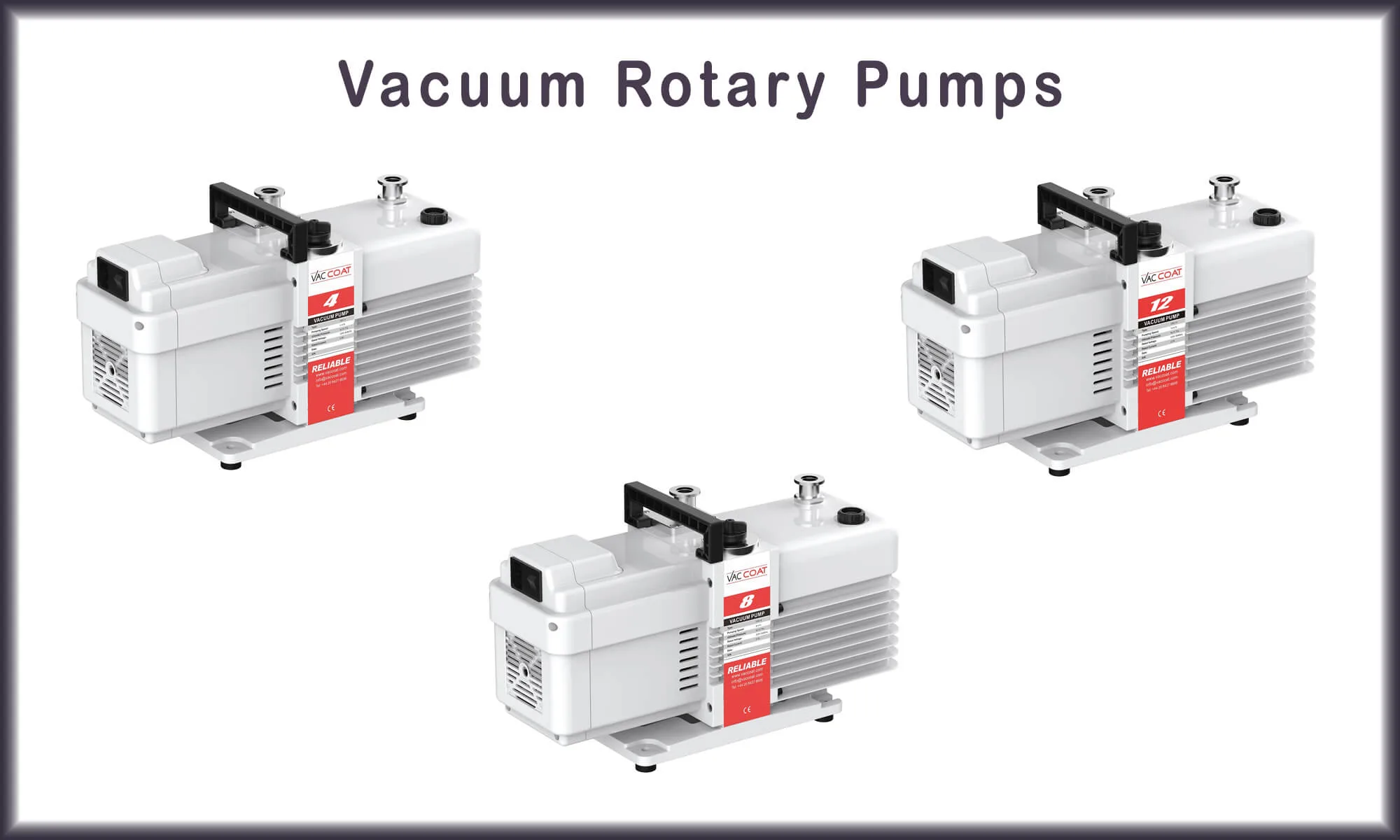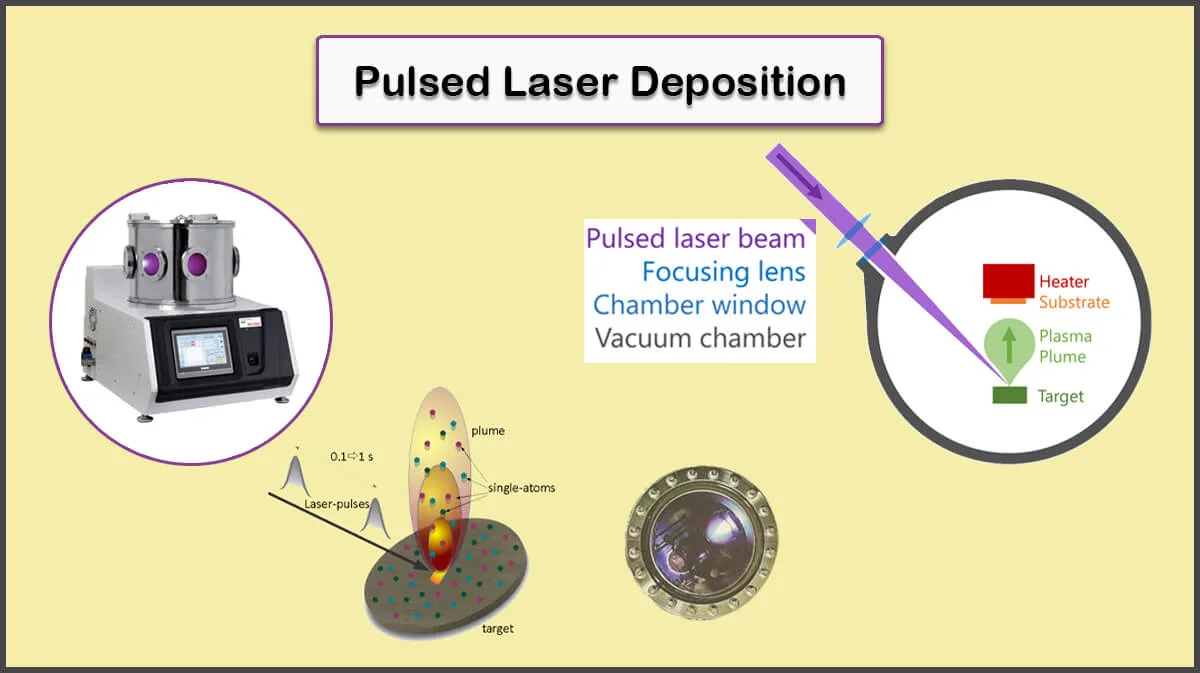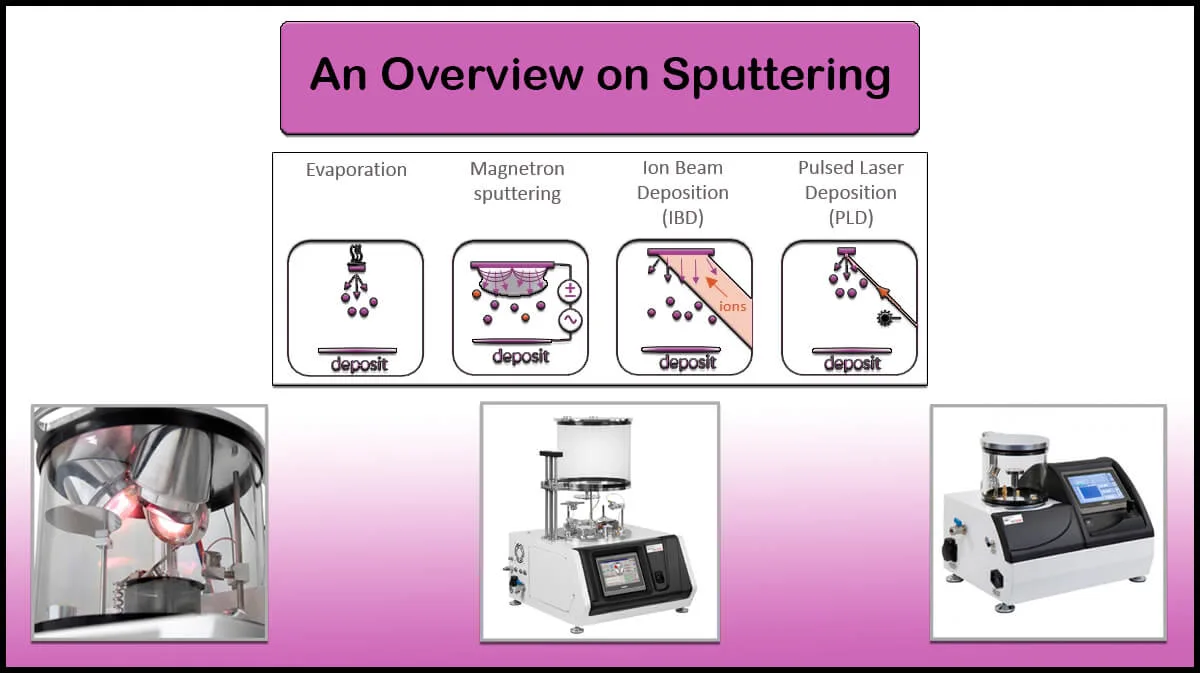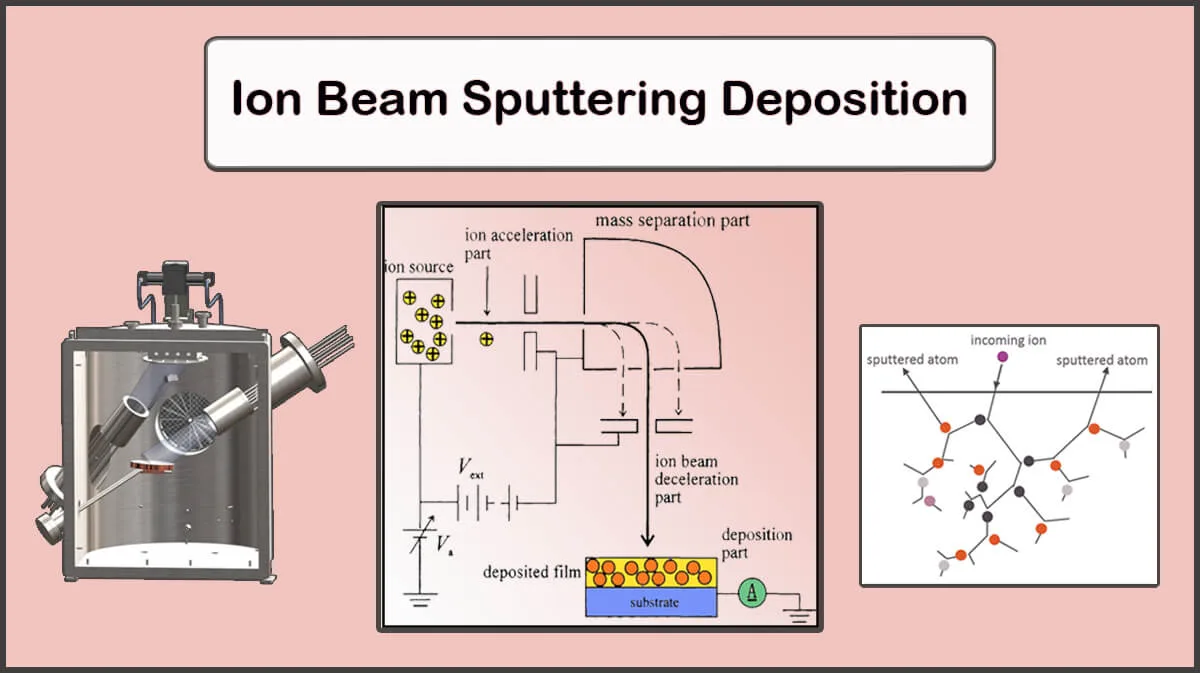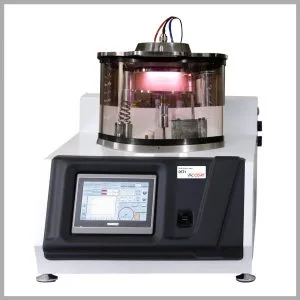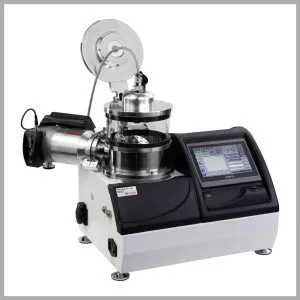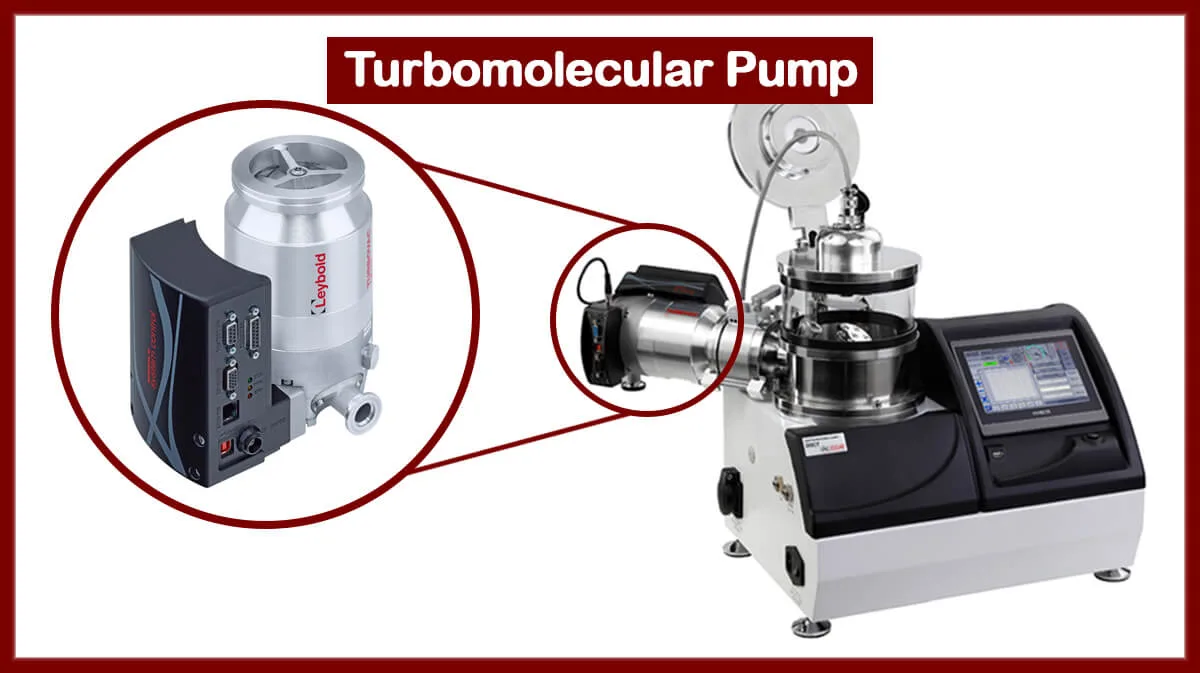
Learn more about Turbomolecular Pumps
One of the most commonly used pumps for high vacuum pressure is the Turbomolecular Pump. These pumps are easy to use and require less care and maintenance than diffusion pumps. The small foot print, the lack of need to cool with water, the speed to reach the desired vacuum, the high purity of these pumps are other advantages compared to diffusion pumps. Using these pumps, the pumping speed can be constant with a good accuracy (One of the disadvantages of these pumps is their high price). Turbomolecular pumps can be used in the range of rough vacuum, high vacuum and Ultra-High Vacuum (UHV) with a constant pumping speed of up to 4000 liters per second.
Turbomolecular pumps are kinetic vacuum pumps that operate using a very fast rotor (usually between 24,000 and 90,000 rpm). One of the advantages of using turbomolecular pumps is that they do not return oil and steam to the vacuum chamber. This is critical in processes that require a completely clean vacuum environment. These features mean that turbomolecular pumps are suitable for a wide range of applications, from Electron Microscopes to semiconductor processing.
Most of the Vacuum Coating Systems manufactured by the Vac Coat Ltd. as a designer and manufacturer of the vacuum systems are equipped with turbomolecular pumps such as Desk Thermal Evaporator–DTT, High Vacuum Sputter Coater–DST1, Triple Target Sputter Coater–DST3, PLD, DCT and etc. This makes these systems widely used in the microelectronics and Semiconductor industry, optics and lasers, Solar Cells, and etc.
History of Turbomolecular Pumps
The turbo pump was invented in 1958 by W. Baker based on old molecular traction pumps invented by Wolfgang Guide in 1913. Turbomolecular pumps work on the principle that by repeatedly colliding with a moving metal blade, gas molecules can be guided in the desired direction. In a turbomolecular pump, a rapidly rotating fan collide the gas molecules to create or maintain a vacuum, directing them from the pump inlet to the exhaust. Most turbomolecular pumps have several stages, each of which includes a rotating rotor and a pair of stator that is constant.
The system works like a compressor that puts kinetic energy into the gas, rather than taking it out. The gas is transferred to the lower stages by the upper steps and is compressed successively to the vacuum pressure level of the backing pump. As gas molecules enter the input, the rotor, which has a number of angular blades, collides with the molecules.
Therefore, the mechanical energy of the blades is transferred to the gas molecules. With this new energy, the gas molecules enter the gas transfer holes in the stator. This leads them to the next stage, where they collide with the surface of the rotor again, and this process continues, and eventually the gas molecules are driven out by the exhaust.
Due to the relative motion of the rotor and stator and special angles to each other, the molecules preferably hit the bottom surface of the blades. A blade for high pressure operation must be strong and stable and as thin as possible to be slightly bent for maximum compression. Because the compression of each step is approximately 10 times, each step closer to the output is significantly smaller than the previous input steps. The performance of the turbomolecular pump is strongly related to the rotor frequency. As the speed increases, the rotor blades become more deflected. To increase speed and reduce deformation, stronger materials and different designs are considered for blades.
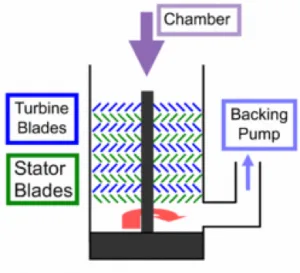
Mechanical Bearing
Some models of Turbomolecular Vacuum Pumps use mechanical bearing rotors (Normally in a so-called cantilevered design with bearings at the lower end of the shaft and in the area of the lower rotor stages). Turbomolecular pumps must operate at very high speeds, and the heat generated by friction limits the design.
The high rotational speed of the turbo pump (some small diameter units operate at 60,000 rpm) puts serious pressure on the shaft bearings. The pumps involved in this method require lubrication, and the pump life depends on the bearing life. Since replacing the bearing is a specialized job, it must be done by opening the pump and sending it to the factory.
The grease and lubricant used in this method should not evaporate under the working pressure of the pump and cause the vacuum destruction. In addition, mechanical bearings make the rotor less dynamic than other types of bearings. Despite all the problems, mechanical bearings have high resistance to external shocks or sudden ventilation and also have small foot print.
Magnetic Levitated Bearing
One of the alternatives for mechanical bearings is active five-axis magnetic bearings (2X, 2Y, Z) located at both ends of the rotor shaft with position sensors and variable magnetic field control (Magnetic levitated bearings). In these magnetic bearings, which either use a permanent magnet for small pumps or a combination of permanent and dynamic magnetic fields, the shaft is contactless. Magnetic pumps include non-contact bearings in which the oil vapor is zero and the bearings do not wear out. Compared to mechanical bearings, these pumps do not require lubrication, causes a process free of hydrocarbons, the pump life is not limited to bearing wear out, and have very low vibration.
Due to the lack of mechanical bearings, corrosive gases can be used in environments evacuated by these pumps, which typically eliminate oil bearings in a short period of time. Pumps that use magnetic bearings are more vulnerable to external shocks compared to turbomolecular pumps that have mechanical bearings. In addition, they are larger and more expensive than pumps that use other types of bearings.
Hybrid Bearing
Another type of bearings used in turbo pumps is hybrid bearings. Hybrid bearings have mechanical bearings located at the bottom end of the shaft rotor and a pair of passive magnetic bearings located at the top end of the shaft. Unlike systems with two mechanical bearings, the lifespan of these units is mainly limited to the life of one mechanical bearing, and they also have less vibration due to the lack of a second mechanical bearing.
Like all-magnetic turbomolecular pumps, hybrid-bearing pumps are less tolerant of external shocks and are slightly larger than systems with two mechanical bearings. The design of the hybrid bearing is such that it causes the desired dynamics of the rotor and also allows the bearing to be replaced on-site. For more information, refer to the following links please:
Some of Vac Coat Systems
References
- https://bit.ly/3yO9GDy
- John F. O’Hanlon (4 March 2005). A User’s Guide to Vacuum Technology. John Wiley & Sons. pp. 385 –. ISBN978 – 0 – 471- 46715-1.
- Marton, Kati (18 January 1980). Vacuum Physics and Technology . Academic Press. pp . 247 –. ISBN 978 – 0-08 – 085995 – 8.
- “Iqbal and Abdul Wasy et. al., NIMA – A, 2012 Design modification in rotor blade of turbo molecular pump”. Nuclear Instruments and Methods in Physics Research Section A: Accelerators, Spectrometers, Detectors and Associated Equipment. 678 : 88 – 90.
- https://bit.ly/3fPeZK8


